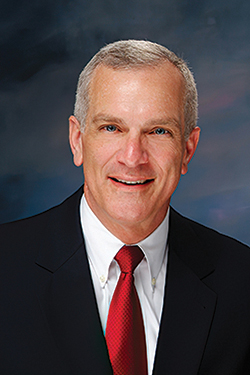
There are 3,069 counties, boroughs and parishes in the United States, and a solid majority of them are considered rural. Since the onset of the COVID-19 pandemic, many people are choosing to work from rural settings in order to take advantage of the many plusses—room to roam, a quieter environment, fresh air and a more relaxed pace, to name just a few.
But like most things in life, there is no perfect place to live. Today, access to fast, affordable and reliable high-speed internet and mobile phone service is essential to everyday life. Yet more than 14 million rural Americans, including portions of Tazewell County, currently lack access to broadband that meets even the minimum federal standards. Remote learning for our schoolchildren, remote work for the adults, telehealth services and ag technologies are all impacted. Even the act of streaming a Netflix movie requires this essential good.
To illustrate the magnitude of the problem, we can first look to history. It took more than 50 years to hook up all homes in America to phone service, and well over 60 years for electrification. One local example involves a small subdivision two miles outside of Morton. The cost of running fiber to these 30 homes is approximately $175,000. Assuming every home subscribes to the service, it would take the internet provider nearly 20 years to recover their initial investment alone. It simply makes no economic sense for a business to invest in rural internet service without a return.
So, how is Tazewell County trying to address this growing digital divide? The issue is being worked on at all levels of government. At the federal level, the FCC recently proposed spending $9 billion for rural 5G deployment. Congressman Darin LaHood is also looking for ways to bring connectivity to portions of his district that currently have no internet access at all. I serve on a national broadband task force with the National Association of County Officials (NACo). Our group is working with federal officials to find funding, identify barriers to buildout, and “future-proof” our global economy. Additionally, the State of Illinois provides grant opportunities for underserved areas of the state.
Locally, Tazewell County has formed a broadband committee headed by county board member Brandon Hovey. The committee is comprised of both board members and local residents. One idea is the creation of special taxing districts that would allow rural subdivisions to issue bonds to finance the installation of fiber optics. The special levy would then be used to pay off the loan over several years. Many rural residents understand their homes will be less valuable without access to reliable high-speed internet. The broadband committee is open to any ideas that will help bring connectivity to these underserved areas.
Lastly, NACo has developed an app called “Test It” that can give upload and download speeds wherever you are and tell you if they meet minimum federal standards. The information from this app is aggregated and given to the federal government to help in their decision making. For better or worse, being “connected” is a part of our life in 2021, and being prepared for the future includes having access to the internet. PM
- Log in to post comments

